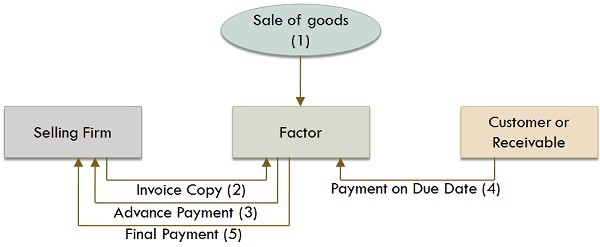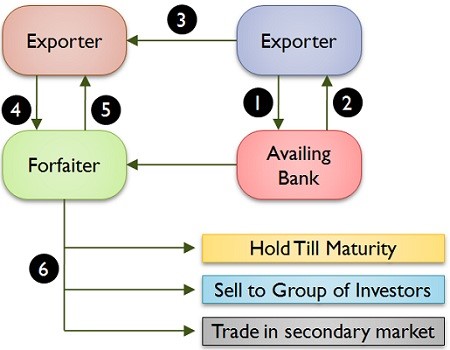| 11-10-2018 | by Nijay Gupta | treasuryXL |

What is Letter of Credit/Documentary Credit under UCP 600 – ICC Paris:
A letter of Credit is a sort of Guarantee issued by a Bank – Opening Bank, on behalf of a buyer(applicant) favouring the seller (Beneficiary) to honour the compliant documents presented thru a Bank (negotiating bank) in terms of the LC conditions. In order to secure payment, the Supplier of goods is given a sort of guarantee by the buyer’s bank to pay (at Sight or Usance or Deferred Payment) on presentation of Documents in terms of LC. So, the LC can provide payment on Sight Basis, Usance Basis or Deferred Payment Basis, based on the Terms of Payment agreed between Supplier & Buyer. The buyer/Opener of the LC is assured Delivery of Goods within the dates of shipment mentioned in the LC.
LC is also known as Documentary Credit, as banks deals in documents and not in goods.
The LC is governed by the UCP 600 (2007) Revision publication by ICC, Paris, provides the set of rules governing LC in Domestic/International Trade in almost all 175 countries. The 39 Articles of UCP 600, gives the details of the various types of LC’s, role/rights/liabilities of various parties i.e.
- Opener/Applicant (buyer),
- Beneficiary (seller),
- Issuing Bank (buyer’s bank),
Advising Bank (Correspondent bank of the LC issuing bank), may act as LC Transferring or Negotiating Bank too for the availability of LC for Negotiation leads to be known as : Restricted LC or LC avaialable with…. Bank
Negotiating Bank (Generally Sellers Bank),
Re-imbursing Bank (generally overseas correspondent bank, where the LC issuing bank maintains its Nostro a/c).
The articles also provide the way various Documents like Bill of exchange, Invoices, Cerifiticate of Origin, BL/AWB, Inspection Certificate, Insurance Policy etc to be preapred and presented to the LC Issuring bank for Payment (Sight document), Acceptance & Payment (Usance/Deferred Payment documents).
What are the various Types of Documentary Credit:
Irrevocable: The LC, which can not be cancelled/amended without the consent of all the parties to the LC, is the most common type of LC is used in Domestic/International Trade. In this, the LC issuing bank guarantees the payment of LC as per the Tenor of the Documents on presentation of compliant documents to the beneficiary.. This is the most common type of LC is used in domestic/international Trade. All types of LC’s are Irrevocable, unless a bank issues Revocable LC, specifically. UCP discussed only about issuing of Irrevocable LC, though the banks can issue Revocable LC or combination of other types of LC as below.
Revocable LC, (which could be cancelled by LC issuing Bank or Applicant without the consent of Beneficiary before the shipment is made) is not in practice and not provided in UCP 600, though the same can still be established by the LC Issuing bank at the request of the Applicant. Irrevocable Confirmed: In this type of LC, the Payment Guarantee is given by LC Advising or a Bank nominated by LC issuing Bank . The bank adding confirmation to the LC is done only at the request of LC issuing bank and the Conforming bank can be in the country of exporter or elsewhere. Since this type of LC requires payment of confirmation charges by the Beneficiary, the use of this type of LC is restricted in case of Geo-political conditions in the buyer country or high risk buyer only.
Irrevocable Transferable: The LC which can be transferred by the Advising Bank at the request of Beneficiary, in part/full or for lesser amount by keeping the profit for the beneficary of LC. Once LC is Transferred, it can not be transferred back to Benficiary of LC. Under this, the LC Transferring bank is the only bank authorised to Negotiate/Pay for documents over and above the LC opening bank
Irrevocable Confirm: LC can be confirmed by a bank in Beneficiary’s Country (generally done by LC Advising bank) or by a bank in other country, when beneficiary is not very sure about the standing of the LC issuing bank or Geo-political situation in buyer’s country. LC is confirmed at the request of LC issuing bank and Confirming bank may ask beneficiary to pay for the confirming charges. On presentation of documents, confirming bank shall becoming like LC issuing bank and is bound to pay/accept documents, as per LC conditions.
Irrevocable Back to Back: Its not provided in UCP but its used by Beneficiary for opening another/local LC backed by the Original LC on same terms and conditions to provide security for payment for supply of goods to the origianl beneficiary .
Irrevocable Revolving: This type of LC provides flexiblity of Re-instating the amount of the LC, on utilisation of the LC amount by exporting the goods as per terms of LC. This type of LC is usefull, for exports of different goods at different period without committing the total value of all exports in one LC. This reduces the requirement of lower LC limit or Cash margin for opening of the LC by applicant (importer).
Irrevocable Stand-By LC: This was inititated at the time when US banks were not authorised to Issue Guarnatees or take Guarantees . But this is very popolus amongst the suppliers of goods and services in today’s time all over the world. This type of LC, provides a guarantee to the supplier of services, equipments, airlines etc to be paid on completion of the serives or agreed time period. Its very common in Airlines and Equipment suppliers on lease or rental basis.
Which type of LC is desirable in Domestic & International Trade:
An Irrevocable LC is quite fine, which allows payment on compliance with the LC terms and this also allows surety of shipment by exporters within the terms mentioned in the LC, though there is no guarantee of quality of goods being supplied by the exporters. That is why Banks say, Bank Deal in Documents and not in Goods and its known as documentary credit.
Should there be a Geo-political situation in the LC issuing bank’s country or the standing of the LC issuing bank can not be established, its better to go for a Confirmed LC. Other types of LC’s are practiced based on the requirement of Importer and Exporters in Trade. LC can have a combination of types of LC together too and i.e. Why LC is the most flexible instrument used in Domestic and International Trade.
What Importer (Applicant) should do before opening LC:
- Get the detailed report of the Supplier from their banks interms of their Standing, Line of business, other business dealings, sanctions on the country etc
- The previous experiences of others with the supplier & Country Risks, or Sanctions
- Get the lines set-up by the Bank for opening of the LC
- Apply to bank for Issuing LC along-with Proforma Invoice or Confirmed Order
- After bank’s issuing LC, ensure, LC is recieved by the Supplier with same terms of Proforma Invoice or confirm order
What Exporter (Beneficiary) should do on receipt of LC:
- check all the terms & conditions of LC as per Proforma Invoice or confirm order.
- Check Incoterms and Terms of Payment
- Check the names of various parties, goods, addresses, requirements of shipments, Incoterms, LC payment terms, Inspection Certitificate, Certificate of Origin, Insurance & other special documents requirments like Weight/analysis/Packing Certificates etc.
- Get the LC confirmed, if the same was desired and the same has been requested by the LC issuing bank to the LC advising bank
- Get the LC amended, in case exporter can not comply with any conditions or terms of LC
- Meanwhile, the exporter can start with Manufacturing or arranging for the goods for shipment
- Can request for fixing lines and ask ask for Pre-shipment and Post shipment finance against LC and presentation of documents
- Exporters should ensure compliance of all terms and conditions of LC, before presentation of documents for payment/acceptance by the Negotiating or LC issuing bank to get protection under UCP 600 of ICC, Paris
What is the future of LC in view of E-Banking and Online business/trade:
Though most of the business is overtaken by online operators, the need for LC shall continue at least for next 25 years. In order to get well worsed with LC, I suggest all to read articles UCP 600 of ICC, Paris and practice with various types of LC, rights & responsibilities of the LC Issuing Bank, Advising Bank, Negotiating Bank, applicant, Beneficiary & Confirming/Re-mbursing/Transferring banks etc in usage.

Nijay Gupta
Founder & CEO NK GUPTA Consulting







